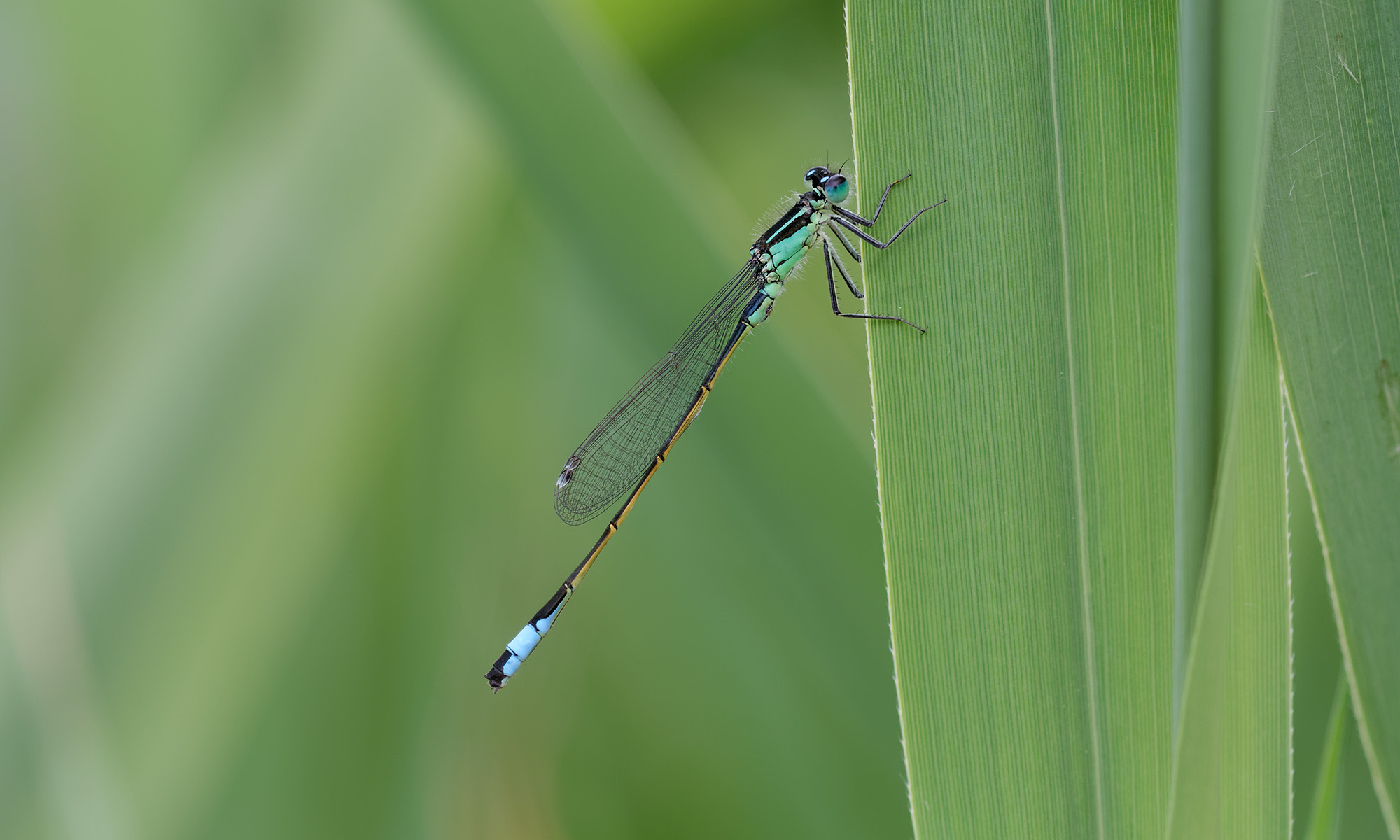On this page you can find some Frequently Asked Questions and their answers. Some of these questions have been asked to me dozens of times, so I thought it useful to make a FAQ list.
Q: What’s the difference between a dragonfly and a damselfly?
A: The very short and incomplete answer is: damselflies are the small and slender ‘flying sticks’ while dragonflies are usually larger and stouter, looking like baby helicopters. If you want to know (much) more, there’s an entire page dedicated to this question and the answers.
Q: Do dragonflies sting or bite?
A: Short answer: No.
Long answer: Dragonflies don’t have stingers. Females of some species have pretty impressive ovipositors, tubes used to stick eggs into plants or sandy substrate. In rare occasions, people who stand knee-deep in water may be mistaken for a suitable substrate for eggs. Usually the dragonfly will quickly realize her mistake and go elsewhere. It’s important to realize a mistake like this is no act of aggression and there’s no venom involved.
Dragonflies do have pretty large jaws, which they need those to crunch the insects they prey on. They don’t suck blood and they don’t bite people. Only if you catch them and hold your finger right against their mandibles, they will start chewing. That mostly doesn’t even hurt and it takes a large dragonfly ages to get through your skin. And even if they succeed, you only get what I call mechanical damage: again, there is no venom involved or something like that
Q: What do dragonflies eat?
A: Dragonflies and damselflies feed on insects like mosquitoes, flies, butterflies and moths and even other, usually smaller dragonflies. They are considered useful! Dragonfly nymphs (larvae) are aquatic and eat anything small enough that moves in the water: mosquito larvae, water beetles, small fishes, salamander larvae, smaller dragonfly larvae.
Q: How long do dragonflies live?
A: Adult dragonflies (called imagos) usually don’t live much more than a couple of weeks. Most dragonflies don’t die of high age but are caught by predators or they simply starve when bad weather lasts too long. If they survive all that, they still don’t live much longer than two or three months max. But the imago phase is only the last phase of a dragonfly’s life cycle: first it’s an egg and then a nymph (larva) and finally imago. The larval stage can take up to five years! So, before you see a dragonfly flying around, remember it has been a nymph for months or even years already. Damselflies usually develop faster than dragonflies.
Q: Where do dragonflies go in winter?
A: In Europe, winters are generally too cold for imagos to survive. At the end of autumn, during the first cold nights, the last remaining imagos die. Most species spend the winters as either egg or nymph. The only exceptions are the two European winter damselflies: Common Winter Damselfly and Siberian Winter Damselfly (Sympecma fusca and S. paedisca, respectively). They survive winter as imagos, hidden on sheltered spots in heathlands and protected by their own antifreeze. Winter Damselflies are exceptions in more than one way: not only do they survive winter as adults, they also live up to eight months as adults! Find out more about these exceptional damselflies on this page dedicated to their fascinating life cycle.
Q: Why are dragonflies attracted to water?
A: Dragonflies are bound to water for reproduction. They drop their eggs in the water or stick them in plants near or in the water. The nymphs live under water until fully grown and then they emerge. But there’s another reason: dragonflies feed on insects. Anyone who has a pond knows that ponds attract mosquitoes and mayflies (both of which also breed in water) and other flying critters. Where’s insects, there’s dragonflies.
Q: I saw a dragonfly rhythmically dipping it’s “tail” on the water. What was it doing?
A: The dragonfly you saw was ovipositing: dropping small packages of eggs in the water, where they can hatch. Each time the abdomen (as the “tail” is officially called) touches the water, one or more eggs are released.
Q: What can I do to attract dragonflies to my garden? Are they attracted to flowers?
A: Dragonflies, unlike butterflies, are not attracted to flowers. They don’t eat nectar, they are predators and feed on insects. If you want to attract dragonflies, you’d best dig a pond.
Q: Some evenings, large groups of dragonflies swarm around my house. They scare me. What are they doing around my house?
A: There’s no reason to be scared. Although dragonflies are pretty large, they are really completely harmless and won’t attack or hurt you at all. They are probably attracted to swarms of smaller insects, which hang around your house for some reason. Dragonflies eat insects, so if they’re swarming around your house, that’s in fact a good thing.

